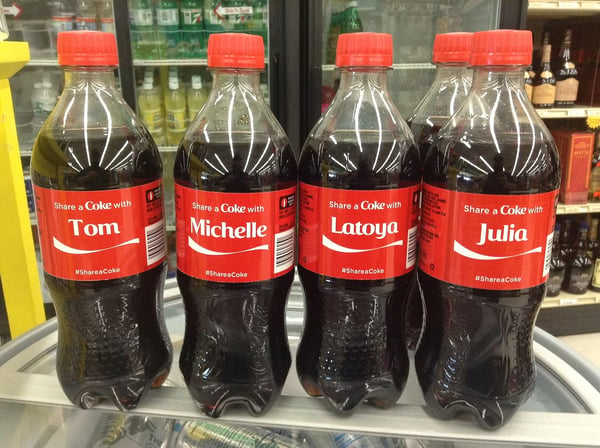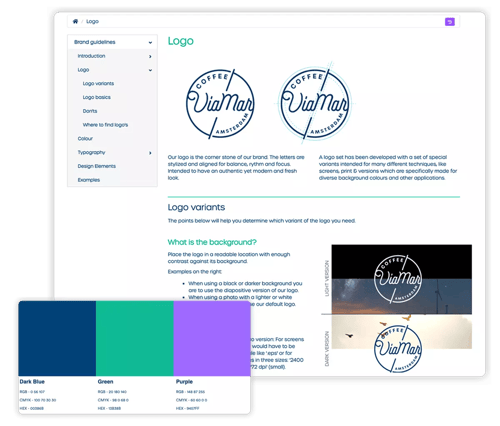.webp?width=300&name=AdobeStock_342206369_Editorial_Use_Only%20(1).webp)
What is localized branding?
Last updated: October 1, 2025
Key Takeaways:
- Localized branding is the process of adapting your brand’s messaging, visuals, and offerings to fit the language, culture, and preferences of each local market.
- It goes far beyond translation; true localization considers brand voice, culture, language nuances, and even brand names.
- Brands that localize effectively avoid customer alienation, build trust, and drive engagement and sales in every region they serve.
For most global brands, English is the language of choice when it comes to creating content, crafting mission statements, putting out social media posts, etc. However, a great nemesis awaits those who only write brand content in English: customer alienation. After all, as a Customer Sense Advisory survey found out, 56.2% of consumers think the ability to obtain information in their own language is more important than the price.
Localized branding is a strategic approach where a company adapts its brand messaging, visuals, and product offerings to align with the language, culture, and consumer preferences of specific local markets.
Why Is localized branding essential for global brands?
For most global brands, English is the default for content, mission statements, and social media. But relying only on English can alienate customers, as over half of consumers say information in their own language is more important than price. Localized branding helps brands connect authentically, making every customer feel seen and valued.
Want to learn more about local marketing? Click here to read all abut it.
How does localized branding go beyond simple translation?
Brand asset localization isn’t just about translating content. It’s about adapting your entire brand experience (voice, visuals, messaging, and even product names) to resonate with local audiences. This ensures your brand feels familiar and relevant, no matter where your customers are.
What are the key elements to consider in brand localization?
Here are four aspects of your branding that you might have to adapt when you enter new global markets:
1. How should you adapt your brand voice for different markets?
Brand voice is how you express your brand’s personality and values. As you enter new markets, you may need to adjust your tone. For example, a confident voice might seem arrogant in reserved cultures, while an individualistic tone could feel out of place in collectivist societies. The goal is to refine (not change) your brand’s personality so it’s perceived as intended everywhere.
2. Why is cultural awareness crucial in localization?
Culture shapes how people interpret messages. A culture-aware localization strategy adapts your messaging to reflect what matters most in each market. For example, motorbike brands emphasize family and responsibility in collectivist countries, but focus on freedom and adventure in individualistic ones.
3. How important is language and dialect in localized branding?
"If you talk to a man in a language he understands, that goes to his head. If you talk to him in his language, that goes to his heart." (Nelson Mandela)
Speaking your customer’s language is essential, 70% of the world’s web users don’t speak English.
Go beyond basic translation: consider dialects, local vocabulary, and even slang. Collaborate with native speakers to ensure your messaging feels natural and creative.
4. Should you adapt your brand name and taglines?
Sometimes, keeping your original brand name works (like Nike), but in other cases, adapting it for local markets (like Mr. Clean) is better. Ask:
- Does the meaning stay the same?
- Can your brand name be pronounced by your target audience?
- Are there any similar-sounding words spoken by the target audience? Do they have good or bad connotations?
- Are there any existing local brands with a similar name?
What are some real-world examples of successful brand localization?
"Think global, act local." These three brands took this slogan seriously and went on to create show-stopping, industry-shaking localization strategies. Here's their story:
1. How did Coca-Cola adapt its campaigns for different cultures?
Coca-Cola’s “Share a Coke” campaign printed popular names on bottles in Australia, tapping into the local value of “mateship.” In China, where first names are more private, they used titles like “close friend” or “classmate” instead. This cultural sensitivity expanded their reach and boosted sales globally.

2. How does Netflix localize content for global audiences?
Netflix tailors subtitles, recommendations, and even its homepage based on users’ language and location. Their original content, like “Sacred Games” in India, is created to feel authentic to local audiences, ensuring relevance and engagement in every market.
3. How does Starbucks reflect local culture in its stores?
Starbucks researches local history, culture, and taste preferences before entering new markets. In Japan, they hired local designers to create stores with references to Shintoism, using natural materials and design elements that honor local traditions. This approach helps Starbucks connect deeply with local customers.
Want more inspiration? Check out these 15 brands with great local marketing campaigns.
What are the best practices for crafting a brand localization strategy?
Now that you have read a bit about top-performing brand localization strategies worldwide and have hopefully gotten some inspiration in the process, it's time to put together your own localization strategy. These three tips will help you put your best foot forward:
1. How can local marketing channels and influencers boost localization?
Aside from big-name, international channels, people also value their local newspaper, radio stations, or town newsletters. These channels might seem a little less sexy, but people grativate towards content that is geared towards them. Adapting your marketing to fit the local newspaper is just another way of localizing your content. And it's a good one.
Engaging and collaborating with local influencers is another valuable tactic to connect with your target audience. Micro-influencers tend to have a more engaged audience than mega-influencers with the differences in engagements rates being 6% versus 1.98% respectively. Customers are also more likely to buy a product if a trusted influencer has promoted it. All in all, partnerships with local influencers can lead to lasting bonds with your local audience, so don't underestimate your local heroes!
2. Why is multilingual SEO important for localized branding?
A more behind-the-scenes tip, but important nonetheless; don't forget about multilingual SEO when sorting out your content localization. There's no point in translating all this content and imagery if your brand isn't going to be found in your new target market. Localizing your SEO also improves accessibility through translated meta-tags and tags.
These five key steps should help you optimize your website content for multiple languages:
- Use dedicated URLs that include a language indicator;
- Apply hreflang tags;
- Stick to one language per page;
- Translate your metadata as well;
- Make your language menu easy to find on your pages.
3. How do you keep your brand guide relevant across countries?
Lastly, future-proof your localization strategy using an online style guide. Style guides are incredibly important to brand documentation, so if you don't already have one, you are at a clear disadvantage. An online style guide gives you the advantage of making quick changes where needed, without everyone in the organization having to download another PDF or print another paper version. Much more sustainable as well.
A good style guide includes information about your tone of voice, writing style, visual style, approved logos, colors, layouts, etc. But adding in chapters with information specific to the different countries or regions your operate in, is a very handy reference to have on hand.

Localized style guides can include info on the four elements we mentioned above, specific translations in text and logo's, different creatives, etc. The risk of rogue marketing is greatly diminished by having a guideline not just for your overall brand image, but also for when it comes to your local marketing.
Your global brand can't wait — Let Marvia help you with local marketing
Building a global brand means more than just reaching a wider audience. It means engaging customers with content in the language and context they relate to. But building the right localization strategy is far from a cakewalk. That's where Marvia comes in.
It would be helpful to think of us as a localization company. After all, we're the #1 platform for all things local marketing. But above all else, we truly care about helping you make the most of your localization marketing. From the brand templates to the digital asset management workflows to the campaign distribution. We offer tools for localizing brands, distributing campaigns, and managing digital assets so that you can distribute them locally with ease.
Want to know more? Find out how our tools help your brand with local marketing or request a demo to check out our platform in action.
Expanding into new markets? Schedule a demo to see how Marvia's solutions can support seamless brand localization, ensuring your messaging resonates effectively across diverse audiences.
> Click here and request your free demo today!
Frequently asked questions (FAQ) about what is localized branding.
Is localized branding only for global brands?
No, any brand with diverse audiences or multiple locations can benefit from localization, even within a single country.
How do I balance global brand consistency with local adaptation?
Define your core brand values and visual identity, but give local teams clear guidelines and tools to adapt messaging and creative for their market.
What’s the biggest mistake brands make with localization?
Relying only on translation, without considering cultural context or local consumer behavior, can make campaigns feel out of touch or even offensive.
How can technology help with localized branding?
Platforms like Marvia offer digital asset management, dynamic templates, and campaign automation to make localization faster, easier, and more consistent.
How do I measure the success of localized branding?
Track engagement, sales, and brand sentiment in each market. Compare results to see which local adaptations drive the best outcomes, and refine your strategy accordingly.